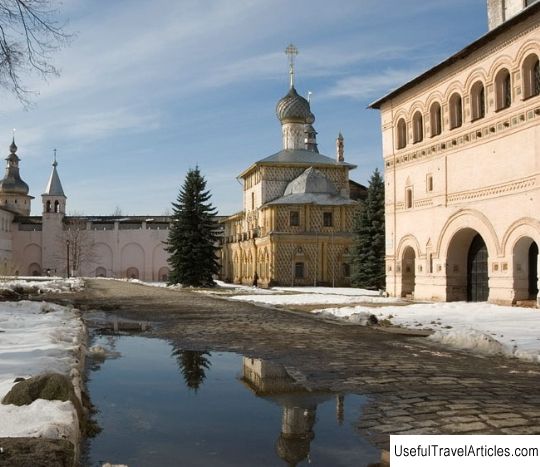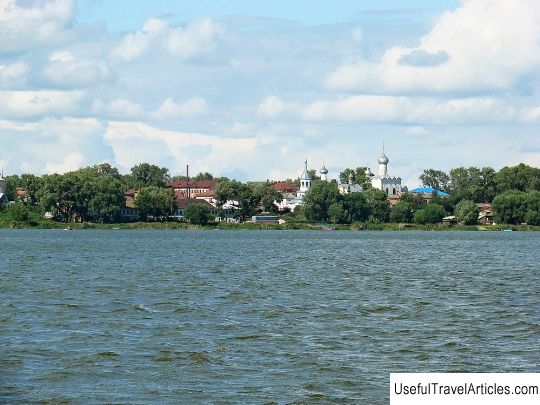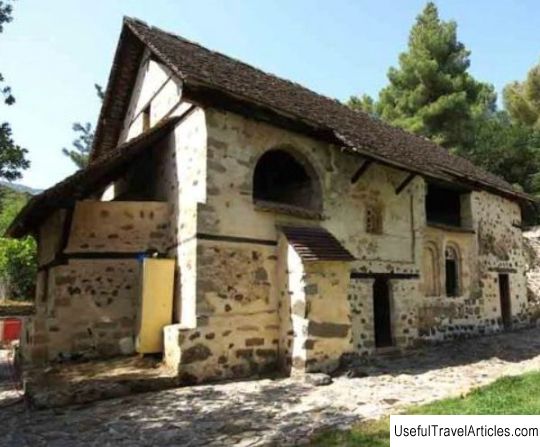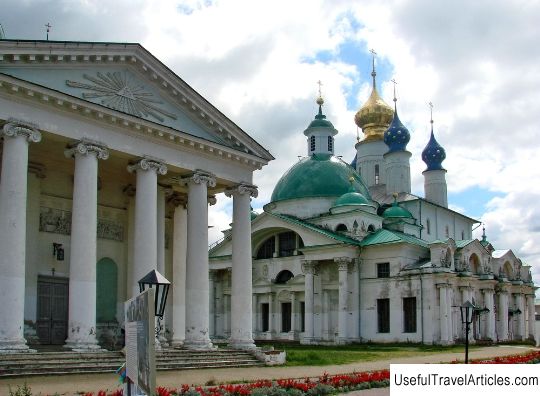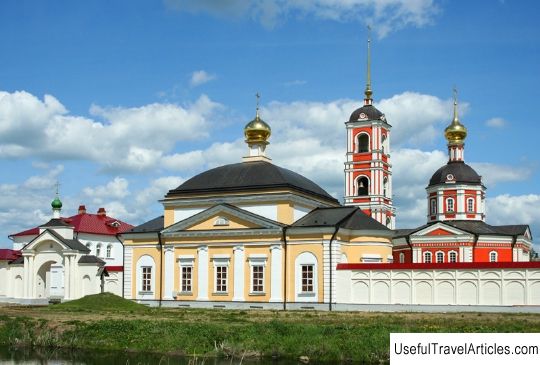Petrovsky Monastery description and photos - Russia - Golden Ring: Rostov the Great
Rating: 7,9/10 (467 votes) 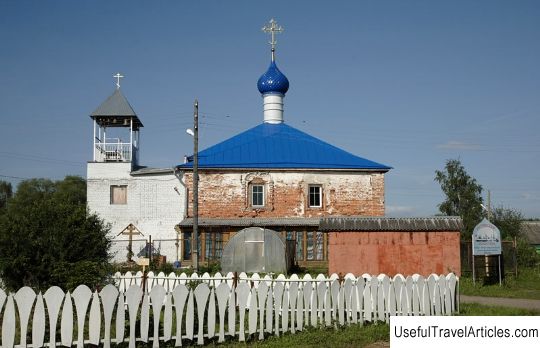
Petrovsky Monastery description and photos - Russia - Golden Ring: Rostov the Great. Detailed information about the attraction. Description, photos and a map showing the nearest significant objects. Photo and descriptionThe Petrovsky Monastery is located on the shores of Lake Nero. It was founded in the 13th century. Tsarevich of Horde, miracle worker Peter, just in the place where the apostles Peter and Paul miraculously appeared to him. The Tsarevich came to Rostov from the Horde together with Bishop Kirill of Rostov. The latter, when he was with Khan Berke, the uncle of the tsarevich, told him about the Christian faith and about the miracles performed by Leonty of Rostov. The prince, secretly from his relatives, left the Horde and decided to convert to Christianity. He caught up with Kirill and persuaded him to take him with him. Arriving in Rostov, he lived with the bishop, attended services and tried to get to know Orthodoxy as closely as possible, and when he learned about the death of Khan Berke, he was baptized, taking the name of Peter. Once on the shore of the lake during a falconry, the prince did not have time to return home, and he had to spend the night in the forest. It was then that two saints appeared to him, who told him that there should be a temple in their honor at this place. After that, they handed the prince two bags - with silver and gold − and disappeared. On the same night, a vision happened to Saint Ignatius, the new Bishop of Rostov, the apostles also appeared to him with the command to build a church. Soon a new church was built on the lake. Peter lived to a ripe old age in Rostov and left behind numerous offspring (his descendants for several centuries lived in Rostov under the name Chirikovs), at the end of his earthly journey he took tonsure. Another legend is connected with the founding of the Petrovsky monastery, according to which Peter, Tsarevich Orda, asked the Rostov prince for land for the monastery, and he, laughing, he offered the prince as much land as he could cover with coins. Without hesitation, Peter began to put on the ground coins from those bags that the apostles had given him: the coins did not run out until the vast territory of the future monastery was covered with them. This is how the history of this monastery began. The construction of the monastery began after Peter died (this happened in 1290). Tsarevich Peter began to be venerated from the 14th century, a local celebration was established from 1547 For a long time, the buildings of the monastery were wooden. In 1682-1684 the stone Peter and Paul Cathedral was erected on the site of the old wooden one. It was a five-domed spacious cross-domed cathedral church. An image was painted on the front wall of the cathedral church, telling about the appearance of the holy apostles Peter and Paul to the prince. The walls of the church were cut through twelve windows with iron bars. The church was adjoined by a stone porch covered with boards. Above the entrance to the church was a colorful image of Jesus Christ. In the temple, the relics of St. Peter. In the cathedral itself, under a carved canopy on a high pedestal, there was an empty shrine. The cathedral church was distinguished by a remarkable iconostasis, which contained icons of ancient writing; special attention was paid to itself by the icon of the Monk Peter with the life, in the limit dedicated to him. Above the tsarevich's tomb were three icons that belonged to him during his lifetime: St. Nicholas the Wonderworker, Our Lady of Hodegetria, the Great Martyr Dmitry, distinguished by excellent writing. Many healings took place at the shrine of St. Peter, as evidenced by the annals of the monastery. In Soviet times, the cathedral was destroyed, its appearance today can only be judged by descriptions of past times. Another stone church, which is a refectory, was built in honor of the Praise of the Mother of God in 1692-1696, it has survived to our time ... The temple is a two-story spacious building with a wide square main volume and a large refectory. Once upon a time, its walls were decorated with carved stone frames on the windows, friezes and cornices, graceful kokoshniks. Today, only a few fragments remain from that decor. In 1805, construction began on the abbot's building, which was completed in 1811. In 1835-1845. the monastery was surrounded by a fence with massive quadrangular towers. Today, almost nothing remains of the fence, but the towers have survived. In Soviet times, they were used as living quarters, as well as the abbot building. The monastery was closed in 1928, the brethren were transferred to the Abraham monastery. The three-tiered bell tower was destroyed, the Holy Gates and the fence were dismantled, and other buildings were handed over for the needs of the residents of the Petrovskaya Sloboda. The revival of the monastery began in the late 1990s. In 1999, a memorial cross was erected on the site of the destroyed cathedral church. And in 2000, the transfer of the buildings of the monastery to the Orthodox community began. At the entrance to the monastery, there is a plaque on which you can see what the reviving monastery was like before.      We also recommend reading Mont Bouet market description and photos - Gabon: Libreville Topic: Petrovsky Monastery description and photos - Russia - Golden Ring: Rostov the Great. |
